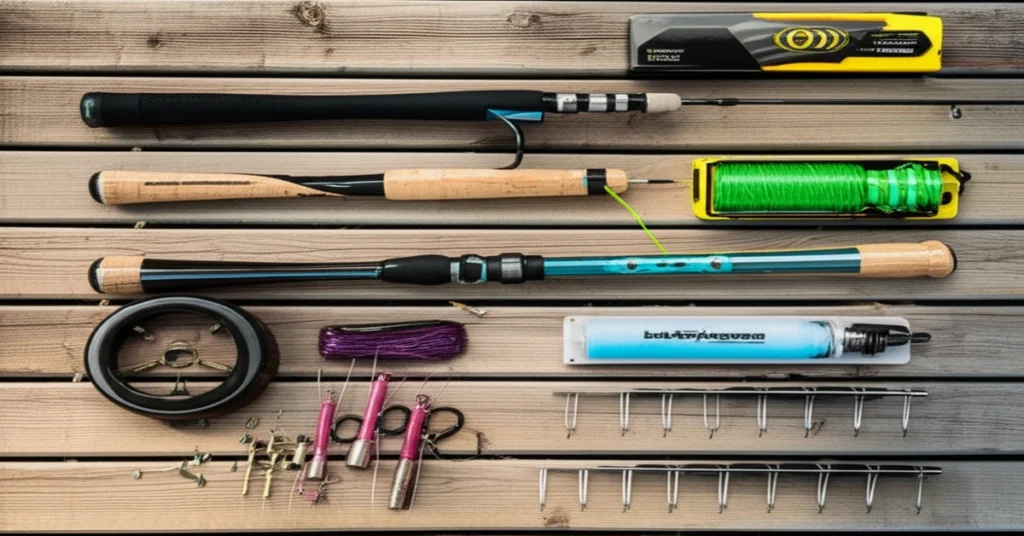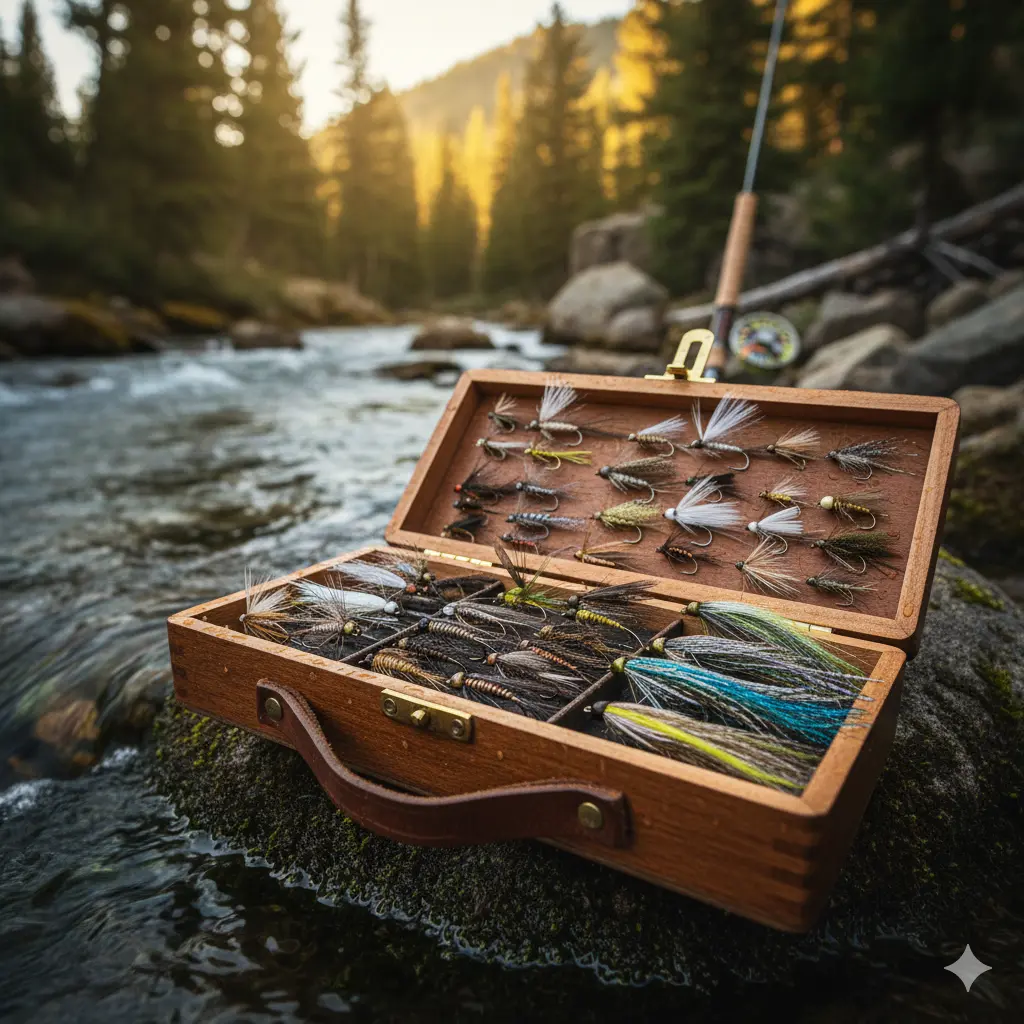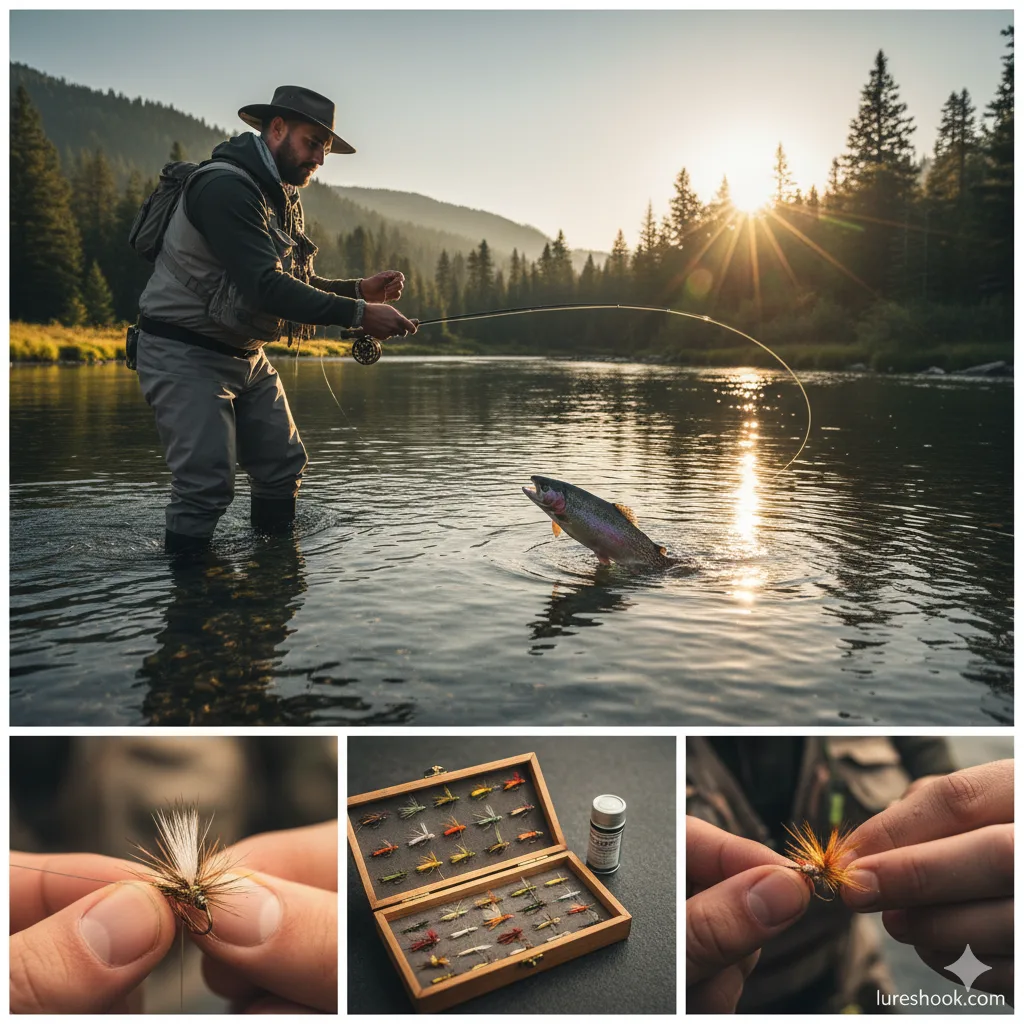The Ultimate Guide to Topwater Fishing Gear
There’s nothing in fishing that matches the heart-stopping explosion of a surface strike. That split-second of chaos is what anglers live for, but turning that violent splash into a landed fish depends entirely on having the right topwater fishing gear. An improper setup leads to missed opportunities, pulled hooks, and endless frustration. This comprehensive guide solves that problem by breaking down every component you need to build the perfect system for surface presentations.
We’ll go beyond just listing lures and dive deep into the science and synergy of your setup. You will learn how to match your rod, reel, and line to the specific baits you’re throwing, ensuring you have the power to cast far, the precision to work your lure flawlessly, and the control to win the fight. By the end, you’ll be equipped with the knowledge to assemble your ideal topwater fishing gear with confidence, leading to more explosive bites and successful hooksets.
Table of Contents
- What is topwater fishing gear?
- Key Benefits and Importance
- Complete Step-by-Step Guide
- Expert Tips & Best Practices
- Common Mistakes to Avoid
- Advanced Strategies for 2024/2025
- Essential Tools & Resources
- Frequently Asked Questions
What is topwater fishing gear?
Topwater fishing gear is a complete, balanced system of equipment specifically designed for presenting lures on the water’s surface. It’s not just one item but a carefully selected combination of rod, reel, line, and terminal tackle that work in harmony to maximize lure action and hook-up ratios.
A truly effective setup considers every detail. This includes a specialized topwater fishing rod with the correct power and action, paired with a topwater fishing reel that has an appropriate gear ratio. The right topwater fishing line and corresponding topwater line weight are chosen to enhance casting and lure movement, while a proper topwater leader setup can be critical in clear water. Finally, the terminal components, from the topwater fishing tackle like walking baits and poppers to the sharpness of the topwater hooks, complete the package of essential topwater equipment.
Key Components
- Rod: The backbone of the system, providing casting distance and the leverage to fight fish. The ideal topwater rod action is often softer than other techniques to prevent pulling treble hooks from the fish’s mouth.
- Reel: The engine that drives the presentation. A high-speed topwater reel ratio is essential for quickly picking up slack line after a long cast or when a fish strikes and runs towards you.
- Line & Leader: Your direct connection to the fish. The choice between monofilament and braid significantly impacts lure action and floatation, while a leader can provide invisibility and shock absorption.
- Lures & Hooks: The business end of your setup. This category of topwater fishing tackle includes everything from poppers and frogs to prop baits, each requiring sharp, strong hooks to ensure a solid connection.
Why topwater fishing gear Matters: Key Benefits
Investing in dedicated topwater fishing gear isn’t about collecting more equipment; it’s about maximizing effectiveness and enjoyment. When your setup is dialed in, you convert more strikes into catches. An optimized system allows for longer, more accurate casts, better lure manipulation, and a significantly higher hook-up-to-land ratio, which can be the difference between a good day and a great one.
Unmatched Visual Excitement
The primary benefit is experiencing the most thrilling bite in fishing. Unlike subsurface techniques where you rely on feel, topwater fishing is a visual sport. Seeing a bass or pike erupt on your lure provides an adrenaline rush that never gets old. Proper gear ensures you can impart the subtle twitches and pauses that trigger these aggressive strikes, making the experience more interactive and rewarding.
Superior Efficiency in Locating Fish
Topwater lures are exceptional tools for covering water and finding active fish. You can work a walking bait or buzzbait much faster than a bottom-contact lure like a jig or worm. This efficiency allows you to quickly dissect large flats, weed lines, and shorelines to locate aggressive, feeding fish. A well-balanced topwater setup lets you make hundreds of casts in a day without fatigue, maximizing your search efforts.
“The biggest mistake anglers make is using a rod that’s too stiff. You need some give in your topwater setup to let the fish fully take the bait before you drive the hooks home.”
Complete Guide to topwater fishing gear – Step-by-Step
Assembling the perfect system is a methodical process. By focusing on each component individually and then ensuring they work together, you can build a setup that feels like an extension of your arm. This guide walks you through the three core decisions.
Step 1: Selecting the Right Topwater Fishing Rod
The rod is the most critical piece of your topwater puzzle. It dictates casting performance and your ability to keep fish hooked. Look for a rod between 6’10” and 7’4″ in length, with Medium or Medium-Heavy power. The most crucial factor, however, is the topwater rod action. A Moderate-Fast action is ideal. It has a softer tip that allows you to impart a rhythmic action to walking baits and prevents the stiff, instant power of a Fast action rod from ripping treble hooks out during a hookset.
- Specific action item: Choose a 7’0″ Medium-Heavy power rod with a Moderate-Fast action for all-around versatility.
- Required tools or resources: Your budget and an understanding of lure weights you’ll be throwing (e.g., 1/4 oz to 3/4 oz).
- Expected outcome: A rod that can cast far, work lures effectively, and absorb the shock of a close-range strike.
Step 2: Choosing the Ideal Topwater Fishing Reel
Your reel needs to be fast. A high-speed topwater fishing reel is non-negotiable for effectively working lures and managing fish. After a long cast with a walking bait, you’ll have a significant amount of slack line on the water. A fast reel helps you pick this up quickly to stay in contact with the lure. More importantly, when a fish strikes and swims directly at you, a high-speed reel is the only way to catch up and maintain pressure.
Look for a baitcasting reel with a topwater reel ratio of at least 7.1:1, with 8.1:1 or higher being even better. A smooth drag system is also essential to protect your line and prevent pulled hooks during the fight. For beginners or those throwing lighter lures, a high-quality spinning reel in a 2500 or 3000 size can also be a good choice.
Step 3: Spooling the Best Topwater Fishing Line
The choice of topwater fishing line often comes down to personal preference and the type of cover you’re fishing. The two primary options are monofilament and braid. Monofilament floats, which helps keep topwater lures on the surface, and its inherent stretch acts as a shock absorber during hooksets. A common topwater line weight for mono is 12 to 17-pound test.
Braid, on the other hand, offers zero stretch for incredible sensitivity and instant hook-setting power, which is great for single-hook lures like frogs. It also allows for much longer casts. The standard is 30 to 50-pound test braid. However, because braid is highly visible and has no stretch, many anglers use a topwater leader setup. This involves connecting an 18-24 inch piece of 15-20 pound monofilament to the braid. This leader provides a bit of stretch and is less visible to wary fish in clear water.
Expert Tips & Best Practices for topwater fishing gear
Once your gear is assembled, applying the right techniques is what brings it all to life. Following best practices will help you get the most out of your specialized setup and put more fish in the boat. It’s about refining your approach for different conditions and skill levels.
For Beginners:
- Wait for the Weight: When a fish strikes, resist the urge to set the hook immediately. The explosion is exciting, but you must wait a second to feel the fish’s weight on the line before sweeping the rod. This ensures the fish has the lure fully in its mouth.
- Master the “Walk-the-Dog” Cadence: For baits like a Zara Spook, practice a rhythmic twitch-pause-twitch retrieve. Use short, downward snaps of the rod tip while reeling slowly to make the lure dart side-to-side. A proper cadence is often the trigger.
- Fish During Prime Time: Topwater fishing is most effective during low-light conditions. Focus your efforts in the early morning, late evening, or on overcast days when predatory fish are more likely to be looking up to feed.
For Advanced Users:
- Modify Your Lures: Don’t be afraid to customize your topwater fishing tackle. Swap factory topwater hooks for sharper, stronger ones. Add a feather to the rear treble hook for extra appeal or use suspend strips to change how a lure sits in the water on the pause.
- Use the Pause Intelligently: An erratic retrieve is often best. After several twitches, let your popper or walking bait sit still for 5, 10, or even 20 seconds. This pause can be the moment a following fish decides to commit and strike.
5 Common topwater fishing gear Mistakes to Avoid
Even with the best equipment, simple mistakes can derail your success. Understanding and avoiding these common pitfalls is crucial for consistency. These errors often stem from a mismatch in the system or a momentary lapse in technique.
Mistake #1: Using the Wrong Rod Action
The Problem: Many anglers use a standard Fast or Extra-Fast action rod for everything. With topwater lures that have small treble hooks, this stiff action doesn’t have enough “give.” It pulls the bait away from the fish on the hookset or rips the hooks out during the fight.
The Solution: Commit to a dedicated topwater fishing rod with a Moderate-Fast topwater rod action. This softer tip provides the necessary delay and shock absorption to ensure the hooks stay buried.
Mistake #2: Setting the Hook on the Splash
The Problem: It’s a natural reaction. You see a huge blow-up and you immediately jerk back. In most cases, you pull the lure right out of the fish’s mouth before it has a chance to fully eat it.
The Solution: Train your discipline. Reel down until you feel the fish’s weight, then use a firm, sweeping motion to set the hook. This small delay increases your hook-up percentage dramatically.
Mistake #3: Picking the Wrong Reel Speed
The Problem: Using a slow reel (5.1:1 or 6.4:1 ratio) creates a disadvantage. It makes it nearly impossible to retrieve slack line fast enough to stay in control, especially with fast-moving baits or when a fish charges the boat.
The Solution: Invest in a reel with a high-speed topwater reel ratio (7.1:1 or higher). The ability to pick up line quickly is a critical component of successful topwater fishing.
Mistake #4: Neglecting Line Choice
The Problem: Using heavy fluorocarbon line is a common error. Fluorocarbon sinks, which pulls the nose of your topwater lure down, killing its action and making it harder to work correctly.
The Solution: Stick with floating lines like monofilament or braid for your main line. If using braid, consider adding a monofilament leader via a well-tied topwater leader setup for a perfect blend of properties.
Mistake #5: Forgetting to Check Your Hooks
The Problem: Factory hooks are often not the sharpest or strongest. Dull hooks can fail to penetrate a fish’s hard mouth, and weak hooks can bend out on a big fish, resulting in a lost trophy.
The Solution: Always inspect your topwater hooks. Sharpen them with a file before use or replace them with high-quality aftermarket hooks. It’s a small detail that makes a huge difference.
Advanced topwater fishing gear Strategies for 2024/2025
As technology evolves, so do fishing strategies. Staying ahead of the curve means integrating modern tools and refining techniques to gain an edge. These advanced approaches combine cutting-edge tech with nuanced lure presentation.
Leveraging Forward-Facing Sonar (FFS)
Forward-facing sonar has changed the game. Instead of casting blindly, anglers can now use FFS to locate individual fish suspended or cruising near cover. You can make a precise cast past the target and work your topwater lure directly into its line of sight. This “video game fishing” allows you to watch the fish’s reaction in real-time and adjust your retrieve cadence to trigger a strike, turning a low-percentage technique into a highly targeted approach.
Hyper-Customizing Lure Buoyancy and Sound
Advanced anglers in 2024 and beyond are moving past simple color changes. They are modifying their topwater fishing tackle internally and externally. This includes adding or removing rattles to change the sound profile, drilling small holes to let water in for a more submerged presentation on the pause, or wrapping lead wire around hook shanks to make a lure sit nose-down or tail-down. These subtle tweaks can be the key to getting bites from highly pressured fish that have seen standard lures countless times.
Essential Tools & Resources for topwater fishing gear
Having the right supporting tools and information sources is just as important as the rod and reel. These items will help you maintain your topwater equipment, make quick adjustments on the water, and stay informed about the best conditions for a surface bite.
Recommended Tools:
- Split Ring Pliers: A quality pair of these is essential for changing out old or damaged topwater hooks. They make a frustrating task quick and easy, ensuring your lures are always ready for action.
- Hook File/Sharpener: Keep a small, diamond-coated hook file in your boat or tackle bag. A few quick swipes on each hook point throughout the day ensures they remain sticky-sharp for instant penetration.
- Braid-Cutting Scissors: If you use braided line, a dedicated pair of serrated scissors is a must. They cut through slick braid cleanly without fraying, which is critical for tying strong knots for your topwater leader setup.
Additional Resources:
- Weather & Solunar Apps: Use apps like Fishbrain or Fishidy to track weather patterns, wind direction, and major/minor feeding periods (solunar tables). This helps you plan your trips around prime topwater conditions.
- YouTube Channels: Channels like TacticalBassin’ and Flukemaster provide incredibly detailed video breakdowns of topwater techniques, lure modifications, and gear recommendations from seasoned experts.
Frequently Asked Questions About topwater fishing gear
Q1: What is the best all-around setup for someone just starting with topwater fishing?
Answer: A great starting point is a 7’0″ Medium-Heavy power, Moderate-Fast action casting rod. Pair this versatile topwater fishing rod with a topwater fishing reel featuring a 7.5:1 topwater reel ratio. For your topwater fishing line, spool it with 15-pound monofilament. This line has some stretch, which is forgiving for beginners, and it floats well. This setup is perfect for throwing most standard topwater fishing tackle, from poppers to walking baits, and doesn’t require a complex topwater leader setup. Ensure your lures have sharp topwater hooks, and this complete package of topwater equipment will serve you well in most situations.
Q2: What are the absolute best weather conditions for topwater fishing?
Answer: The ideal conditions are typically low-light periods combined with a calm or slightly rippled water surface. Early morning, late evening, and heavily overcast days are prime time. A light breeze that creates a “chop” on the water can be even better, as it breaks up the lure’s silhouette and makes fish less wary.
Q3: Should I use a leader with my braided line for topwater?
Answer: It depends. In very clear water or when fish are highly pressured, a 1-2 foot monofilament leader can definitely get you more bites because it’s less visible than braid. It also adds a small amount of stretch. However, when fishing in heavy vegetation with a hollow-body frog, it’s best to tie the braid directly to the lure for maximum power to pull fish out of the cover.
Q4: How do I stop missing fish on my topwater lures?
Answer: The number one reason for missed fish is a premature hookset. You must wait to feel the fish’s weight before you swing. The second most common reason is dull hooks. Check them constantly and sharpen or replace as needed. Finally, make sure your rod has a soft enough tip (Moderate-Fast action) to allow the fish to take the bait without feeling too much resistance.
Conclusion: Master topwater fishing gear for Long-term Success
Building the perfect system of topwater fishing gear is a journey of precision and synergy. It’s about understanding that each component—from the rod’s flex to the line’s buoyancy—plays a vital role in the final presentation. By deliberately choosing equipment designed for surface applications, you transform your setup from a general-purpose tool into a specialized weapon that maximizes every explosive opportunity.
As you move forward, continue to refine your setup based on your experiences. The core principles of a balanced system will remain the foundation of success, allowing you to adapt to new lures and evolving techniques. Mastering your topwater fishing rod, topwater fishing reel, and the complete set of topwater equipment isn’t just about catching more fish—it’s about becoming a more effective and confident angler, ready for that next heart-stopping surface strike.
Related Articles You Might Find Helpful:
- How to Choose the Perfect Topwater Rod Action for Walking Baits
- Braid vs. Mono: A Deep Dive into the Best Topwater Fishing Line
- 5 Advanced Lure Modifications to Get More Topwater Bites
What’s Your topwater fishing gear Experience?
What’s your go-to topwater lure and the specific rod and reel combo you use with it? Share your favorite setup in the comments below—we’d love to hear what works for you!
Note: This guide reflects current best practices and is updated regularly to ensure accuracy. Last updated: October 17, 2023



